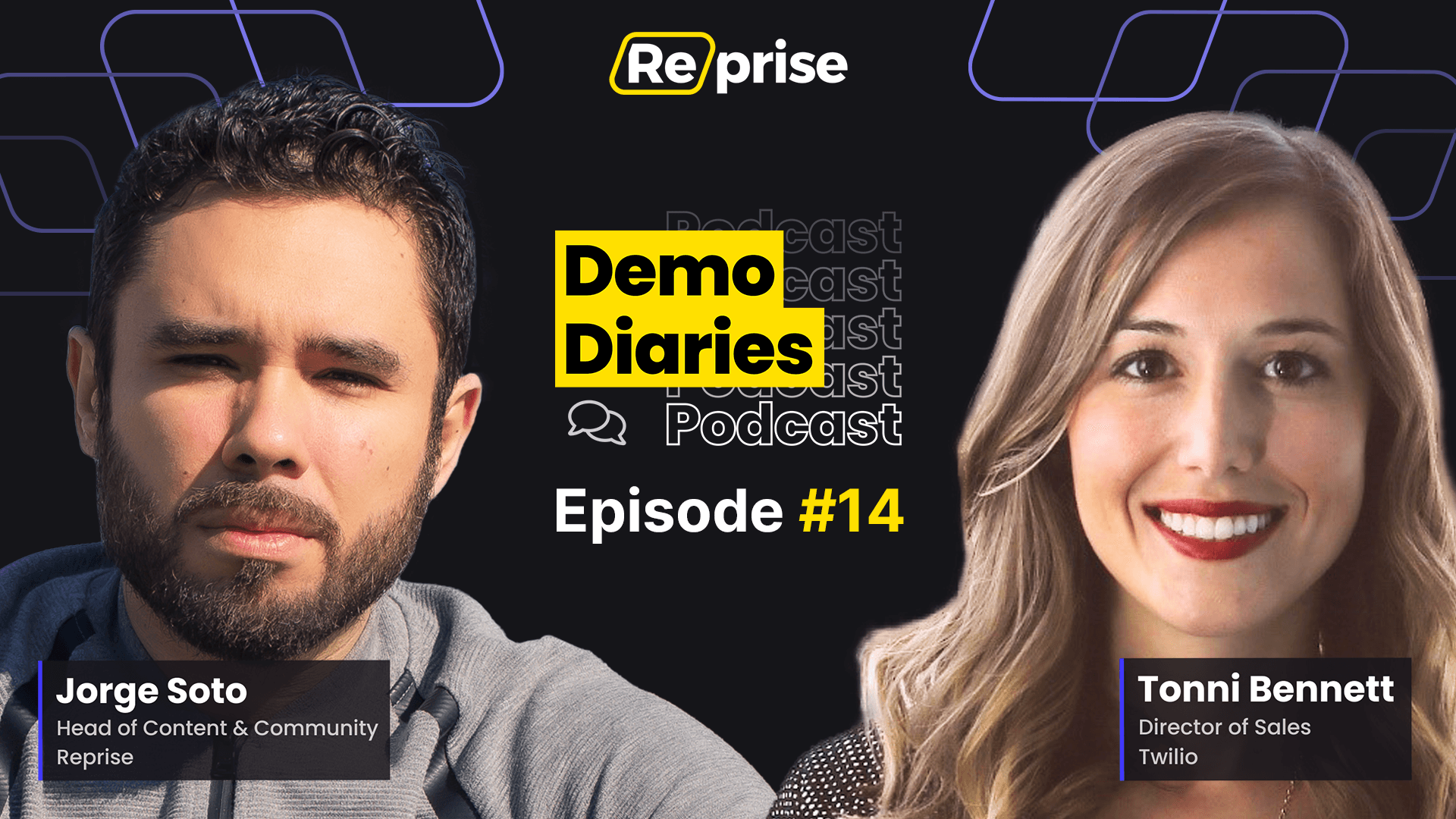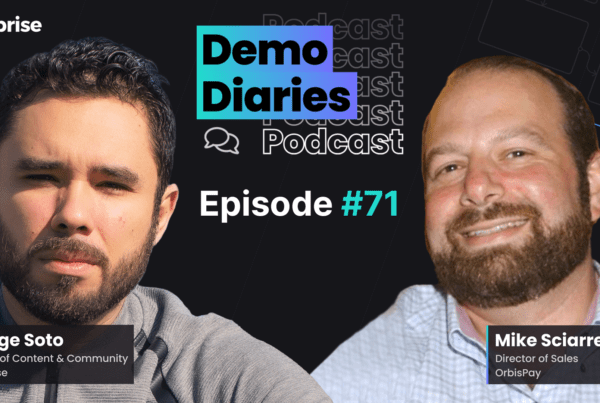Successful selling with a product-led motion is partly about having a truly top-notch product – and also partly about gaining a deep understanding of what your customers use your product to do. In this episode of the Demo Diaries podcast, I talked to my friend Tonni Bennett, Director of Sales at Twilio, about how her sales team succeeds with PLG.
Meet Tonni
She grew up in the marketing tech sales world, and then made her way to SalesLoft and Terminus from the sales side. After she had her daughter, she took a year off and then came to Twilio. Coming from smaller tech companies, she has found that Twilio operates on a much larger scale -it’s a big company to her.
Marketing Tech vs. Tech Sales
Tonni spent most of her career in martech, so the switch to technical sales has been a different ball game and very interesting. It’s a totally different sales motion. In martech, a lot of your audience is looking for ways to market to their own audience better, and are giving budget to do things to produce leads for the business. Selling to them involves creating a picture, telling an ROI story, and getting the wheels turning for what they can do.
However, technical sales has some significant differences. At Twilio, they offer a stack of communications APIs so businesses can get in contact with their customers in a wide variety of ways. They have all these building blocks, but almost nothing comes out of the box. That means it’s harder to demo, and also that sales involves much more than doing an out-of-the-box demo, signing a contract, and handing it all off to the customer. Many of their customers will actually leverage their APIs without talking to sales at all – they can sign up online and start using the product and basically create their own POC. They have to have a project in mind, build it, and see success before they’ll pay for or commit to anything.
Sales for Tonni now is more about what customers are trying to achieve than in her part martech sales life. Once she and her team truly understand what a prospect is trying to do, then they can architect recommendations. They essentially become more of a project manager and advise them on the best ways to approach a project, rather than a pure sales pro.
Making Product-Led Growth Work
The sales approach at Twilio starts with one basic principle: it’s hard to get someone who is spending $0 on the product to spend $5, but if they’re spending $5-10, they can get them to spend hundreds or thousands. Twilio offers a lot of value and customers see that when they test it themselves. They have analytics that tell the sales team when spend increases, when they’re using a new API, or other signals and cues that spend or usage has increased or changed. Then they can reach out to say: what are you working on, and how can we help you? They get to work on what the customer wants to achieve.
How She Sells
There are a few different ways the Twilio team sells. Sometimes a prospect comes in when they’re doing a big project, and making that sale requires a big effort but less selling. But most times it’s harder. Her team works hard to understand what the customer is trying to do, what they do as a business, and how they want their customer journey to look.
Some customers have a clear vision and they can help them map it out with solutions engineers, etc. But sometimes they don’t know, and just want to modernize but don’t know exactly what or how to change. Then, the Twilio AE brings in more visioning, specialists, and other resources to build and create that vision.
Since they don’t have many out-of-the-box options, demos are challenging and they don’t do full ones often. They sometimes make little demos for an API or a text bot, but often need to get creative. Sometimes it’s visioning or whiteboard instead. The key to their success is understanding what customers want to build, how technical they are, and how Twilio can get them there. Very technical customers don’t really need a demo usually, but others do, so they customize based on each customer.
Watch the full episode:






